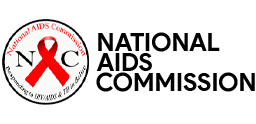Combination Prevention
Combination Prevention is a rights-based, evidence-informed, and community-owned program approach that uses a mix of biomedical, behavioral, and structural interventions, prioritized to meet the current HIV prevention needs of particular individuals and communities, so as to have the greatest sustained impact on reducing new infections.
The goal of combination prevention is to reduce the transmission of HIV by applying a combination of behavioral, biological, and structural interventions that are carefully selected to meet the needs of a population. Also, because individuals’ HIV prevention needs change over a lifetime, combination approaches help ensure that people have access to the types of interventions that best suit their needs at different times.
Biomedical interventions are those that directly influence the biological systems through which the virus infects a new host such as male and female condoms, anti-HIV treatment as prevention, and voluntary medical male circumcision.
Behavioral interventions include a range of sexual behavior change communication programs that use various communication channels (e.g., mass media, community-level, and interpersonal) to share behavioral messages designed to encourage people to reduce behaviors that increase risk of HIV and increase protective behaviors (e.g., risks of having multiple partners and benefits of using a condom correctly and consistently). Behavior interventions also are aimed to increase the acceptance and demand for biomedical interventions.
Structural interventions address the critical social, legal, political, and environmental enablers that contribute to the spread of HIV. Widely used categories to describe structural interventions include: legal and policy reform, reducing stigma and discrimination against people living with HIV and marginalized groups, gender inequality and gender-based violence, economic empowerment and other multi-sectoral approaches, and education.
Maximizing Limited Resources for HIV Prevention
Over the last decade, lead HIV agencies have recommended the use of “combination prevention” approaches to reducing HIV infections. However, simply combining interventions is not enough. To achieve greater reductions in new infections, prevention strategies need to be combined in the smartest and most efficient ways possible for each of the populations affected by the epidemic.
Perhaps the need to do more with resources is greater today than ever before. The global economic crisis has lead to significant reductions in HIV prevention demanding greater efficiency and impact from each dollar spent.
This approach guides the movement of prevention resources as well as the development of specific prevention strategies for all at-risk populations including Men Who have Sex with Men, other at risk men, female sex workers, youths and others.
Treatment as Prevention
Studies have demonstrated the benefits of ART for the prevention of HIV transmission. There is evidence that individuals on effective anti-HIV treatment who are properly keeping with treatment, are less likely to spread HIV to others. Conversely, those unaware of their HIV status may spread HIV to their partners. At the individual level, ART reduces viral load and infectiousness, making it a prevention method.
